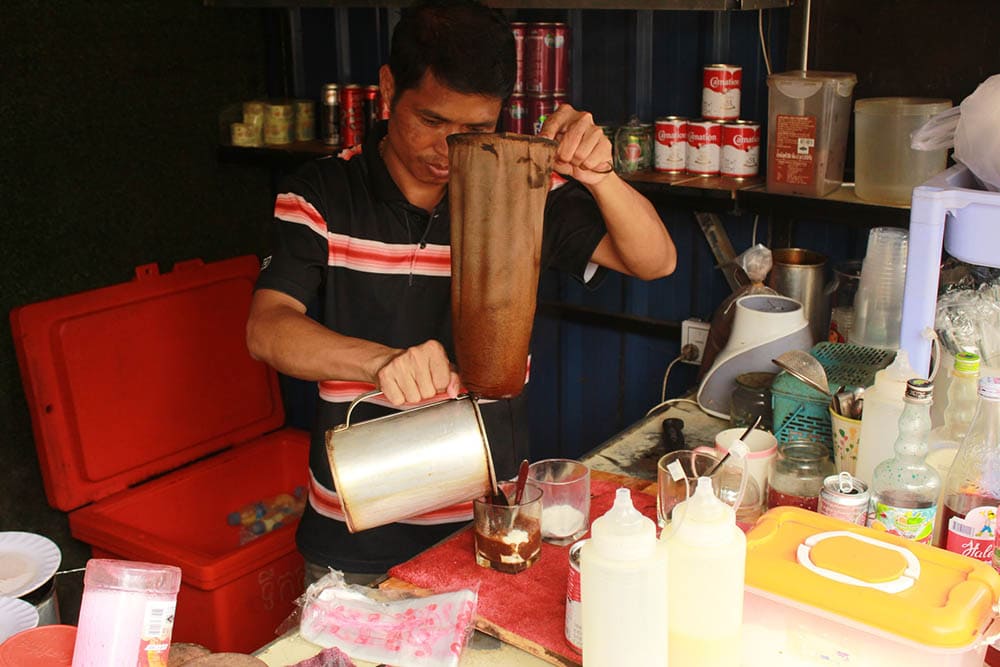
When thinking about the largest contributors to the coffee supply worldwide, Cambodia is not exactly the first country that comes to mind, even among Asian countries. You’re more likely to think of China, India, or Vietnam. And even though it’s true that Cambodia’s yearly coffee exports only account for 0.1% of all coffee exported worldwide, they do have a unique way of serving their coffee, especially iced coffee.

Does Cambodia Grow Coffee?
Yes, Cambodia grows coffee. They grow 100% Robusta beans. Since all of their coffee is Robusta, it makes sense that they only export 0.1% of coffee worldwide because Arabica coffee beans are generally more desired due to their lighter notes and smoother flavor profile.
Most of Cambodia’s coffee is grown between 2,000 to 3,000 feet of elevation. These are good growing conditions for Robusta beans. The average elevation is roughly 415 feet across the country. Only a small fraction of the country in the Cardamom Mountains, Phnom Kong Rei Mountain range, and Elephant Mountains, has conditions that are somewhat suited to growing coffee. In the last 15 years, coffee production has dropped roughly 70%. The growing conditions are not optimal, even for Robusta beans. Most coffee consumed in the country is imported, mostly from Vietnam.

Who Introduced Coffee to Grow in Cambodia?
Coffee was introduced to Cambodia in the 19th century, around the same time it was introduced to other countries in Indochina by the French. There had already been a preexisting trade relationship two hundred years prior.
What Does Cambodian Coffee Taste Like?
Cambodian coffee that is grown in Cambodia has a notably bitter taste and is generally considered to be of rather low quality. It is usually roasted dark. Due to the naturally bitter taste of the bean, it is often roasted with margarine or butter to add a richer and sweeter flavor to it. It is usually roasted very dark to mask any of the undesirable flavors in the bean.
Many roasters are at least slightly paranoid that someone will steal their secret roasting recipes. This is reflective of the overall lack of transparency in the coffee industry in Cambodia. You may go to a ‘roastery’ in Cambodia but not see an actual whole coffee bean. This is because many roasters are fiercely competing in this cutthroat industry, oftentimes cutting corners. In an attempt to keep their prices down, they will use substitutes such as ground blackened corn mixed with chicory and ground soybeans or at best will cut imported Vietnamese coffee with either of the substitutes. This is the kind of coffee you will most likely get on the street in Cambodia. If you want to ensure that your coffee is uncut with any nonsense, find a place that grinds their beans fresh!

Cambodian Iced Coffee Recipe
There are a variety of versions of Cambodian Iced Coffee. Some use brewed and filtered coffee while others use espresso. Here is a popular way.
If brewed coffee, then a Vietnamese coffee filter (similar to a French press) or a paper filter is used. If it is a pour-over filter brew, then after the initial extraction, the coffee is poured over the same grounds two to three more times to get the strongest possible flavor. Since the coffee is of the Robusta species, it tends to have a very strong flavor anyhow. This strongly brewed coffee is poured over sweetened condensed milk. Then unsweetened condensed milk is frothed and poured. Ice is added and it is ready to serve. Espresso is preferred for better flavor. Pouring coffee over used grounds produces stronger coffee but more undesirable flavors and bitterness.
This is an authentic way to make Cambodian iced coffee. Condensed milk from a can is used due to the cost and lack of good dairy available in many areas of Southeast Asia.

Final Thoughts
Probably the major contribution that Cambodia brings to the coffee world is its delicious and layered iced coffee. That being said, even though in recent years there has been a greater demand for single-origin coffee from Cambodia, the supply has not been able to keep up. If you want to make Cambodian-style iced coffee, you’re better off finding a single-origin Arabica that you can use to make a dark roast with vegetable fat.
Other great reads:
Featured Image Credit: Per Bengtsson, Shutterstock
















